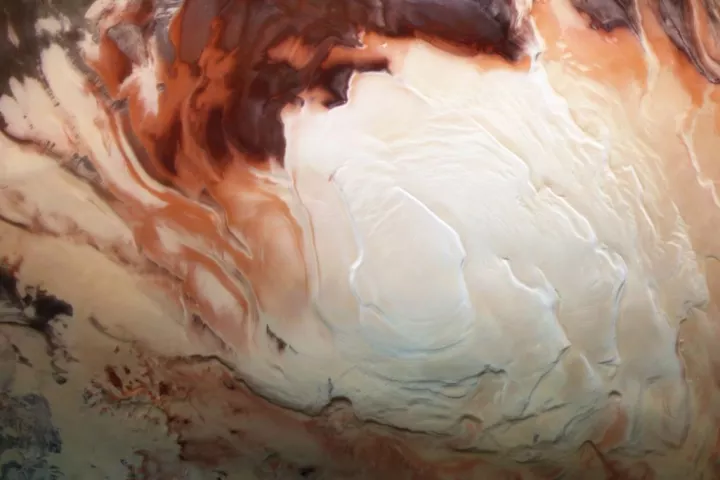Mars Reconnaissance Orbiter
-
If you’re looking for some Red Planet real estate, there’s a new tool that could help you pick out the very best spot. Caltech scientists have created a nearly complete global map of Mars at an extremely high resolution of 5 m (16.4 ft) per pixel.
-
NASA’s InSight Mars lander has made two major new discoveries. By sensing seismic activity from the Red Planet, the craft has now detected a large meteorite impact, and found evidence of magma pools and volcanic activity still occurring today.
-
In 2018 astronomers announced the discovery of lakes of liquid water on Mars at the south pole. Sadly, a trio of new papers refutes the claim, with new experiments suggesting that the “water” signal was more likely produced by frozen clay instead.
-
Mars may have experienced up to 20 ice ages in the past 300 to 800 million years, according to the results of a new study. Glaciers formed during the cooling periods represent fascinating targets for future exploration missions.
-
The 2018 global dust storm on Mars that killed the Opportunity rover is providing scientists with new insights into how the Red Planet may have lost its atmosphere over billions of years due to dust towers that storms push as high as 50 mi (80 km).
-
Mission scientists have gained another fresh perspective on InSight's new home on the Red Planet, courtesy of intriguing aerial images snapped by the Mars Reconnaissance Orbiter (MRO).
-
After spending over 12 years studying Mars, NASA's Mars Reconnaissance Orbiter (MRO) is getting some preventative maintenance to allow it to remain in service until the mid-2020s.
-
Mars may not be as dry as it looks. NASA and the USGS have used MRO instruments to analyze the vertical structure and thickness of buried ice sheets, which preserve a detailed record of the Red Planet’s past and could provide future human explorers with an easily-accessible water supply.
-
In 2011 the Mars Reconnaissance Orbiter (MRO) spotted dark streaks in the dust that appear in summer and vanish in winter, hinting at the influence of flowing water. On closer inspection however, a new NASA report suggests the answer may not be so simple.
-
As of Monday, NASA’s Mars Reconnaissance Orbiter has clocked an impressive 50,000 laps of the Red Planet. The spacecraft has been instrumental in NASA’s ongoing efforts to unravel the secrets of Mars, and it’s not done yet, with mission scientists anticipating years of mileage yet to come.
-
If images of the Earth from the Moon have become a little ho-hum, how about an image of the Earth and the Moon from Mars? Courtesy of the HiRISE camera on NASA's Mars Reconnaissance Orbiter (MRO), we have a new view of our home planet and its nearest neighbor.
-
Mars is home to many phenomena that we'd never see on our home planet, some of which are the networks of veiny troughs found around its South Pole. These "spiders" are usually thousands of years old, but now for the first time a team of scientists seem to have caught some in their early stages.
Load More










